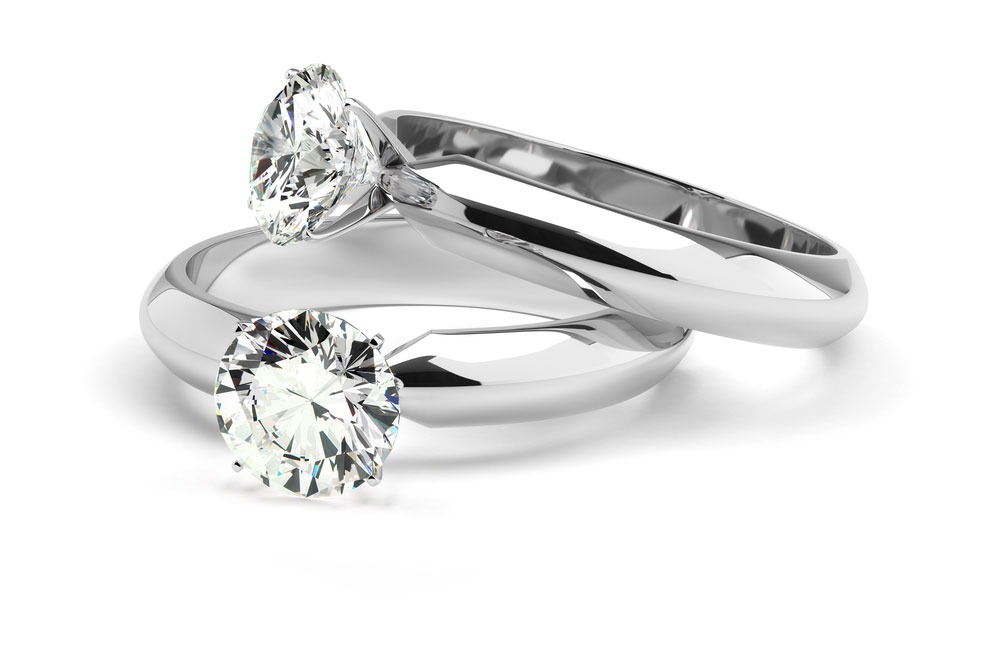White gold vs Platinum
White gold and platinum look the same, and many people ask what the difference is.
Here’s a brief explanation of the difference between the two metals – as well as their advantages and disadvantages.
WHITE GOLD
Not everybody knows it, but white gold doesn’t exist naturally.
It’s made from yellow gold mixed with white metal alloys like palladium or silver, and then it’s given a beautiful coating with a rare, silvery-white metal called rhodium. This final rhodium finish gives white gold its luminous sheen.
The reason why white gold is combined with alloys is because gold, as a metal, is extremely soft. If pure gold was used on its own in jewellery, it would bend out of shape very quickly. For this reason, both yellow gold and white gold have to be mixed with harder alloy metals, to make them more rigid and durable in jewellery.
You may have heard the term “carat”, abbreviated with the letter ‘K’. This measurement is used to describe the purity of gold. The measurement is on a scale of 24, where “24 carat” (or 24K) represents pure gold. 9K gold is therefore 37.5% pure gold and 18K gold is 75% pure gold. The rest is a mixture of alloy metals used to harden the gold.
Our white gold engagement rings are made with either 18K or 9K white gold, to suit your budget. All our gold jewellery items above 1 gram in weight are hallmarked in the UK. This means their gold carat weight is officially certified by the UK Government.
Rest assured, we do not use nickel as an alloy in any of our jewellery

PLATINUM
Platinum is a naturally occurring white metal. It is rarer than gold, and much heavier and harder.
Platinum is a naturally occurring white metal. It is rarer than gold, and much heavier and harder. Because of its hardness it can be used in a purer form than gold, usually at about 95%. Platinum is consequently much more expensive than gold.
Many people believe platinum is scratch proof, but it can mark. The surface scratching of platinum jewellery is called “the patina of age” and is viewed as something desirable. The patina shows an item of jewellery is much loved and used, and gives it an heirloom feel.
PLATINUM VS WHITE GOLD
The main advantage of white gold over platinum is that it is much more affordable.
However, you may need to recoat your white gold item in rhodium once or even twice a year, because wear and tear rubs away the outer coating and the yellow gold underneath becomes visible.
Recoating white gold jewellery with rhodium is not expensive, and it can be done quickly at most jewellers. But it does mean that you’ll need to maintain your jewellery regularly – over the years this cost can build up. In the case of engagement rings, you may also need to be without your ring for a few days, while it’s being recoated.
Platinum jewellery is initially more expensive than white gold. However, it can be argued that platinum is more cost effective in the long run because it does not need to be recoated.